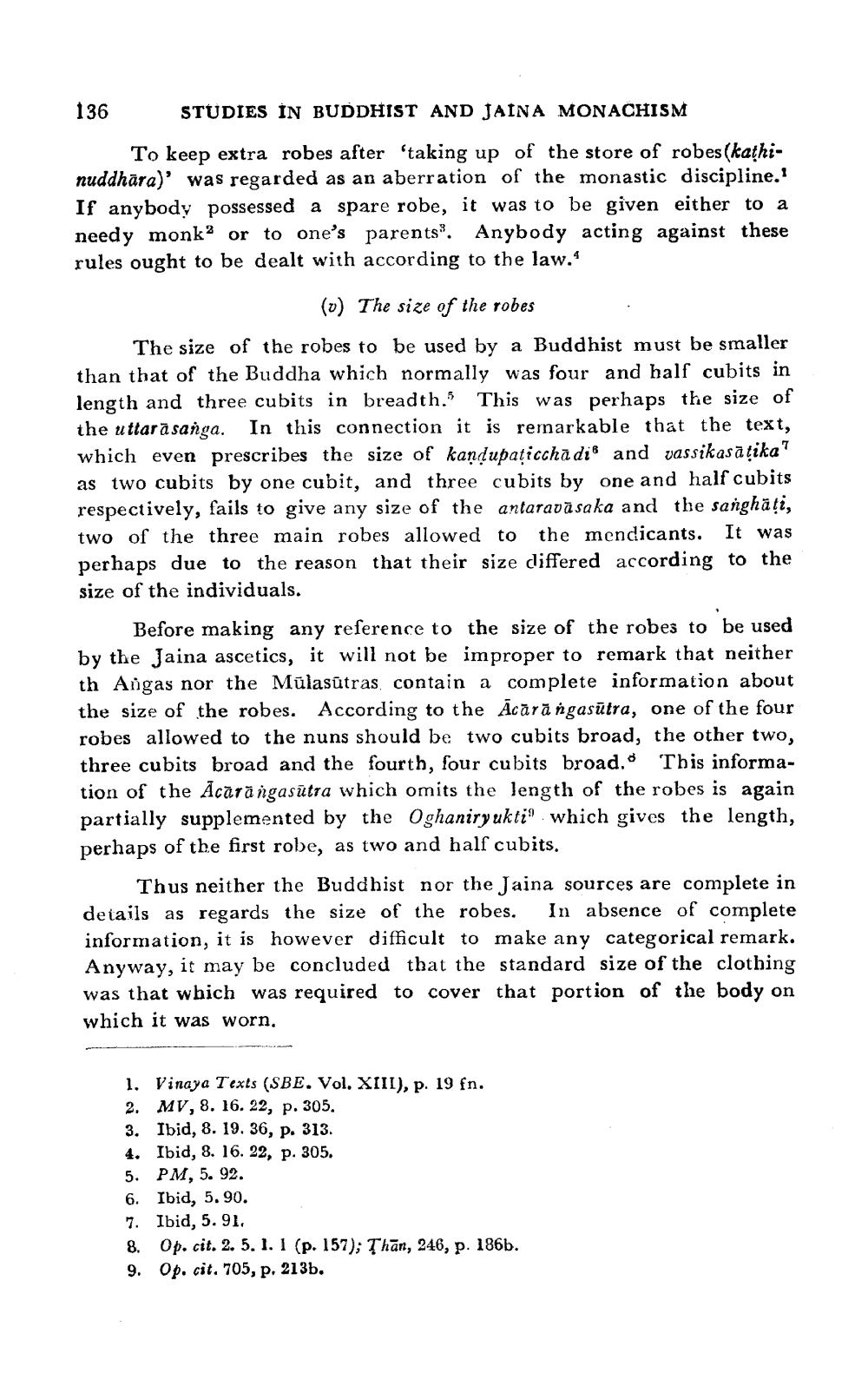________________
136 STUDIES ÎN BUDDHIST AND JAINA MONACHISM
To keep extra robes after taking up of the store of robes(kathinuddhāra)' was regarded as an aberration of the monastic discipline.' If anybody possessed a spare robe, it was to be given either to a needy monks or to one's parents'. Anybody acting against these rules ought to be dealt with according to the law."
(o) The size of the robes
The size of the robes to be used by a Buddhist must be smaller than that of the Buddha which normally was four and half cubits in length and three cubits in breadth. This was perhaps the size of the uttarā sanga. In this connection it is remarkable that the text, which even prescribes the size of kandupaticcha dil and vassikas ātika as two cubits by one cubit, and three cubits by one and half cubits respectively, fails to give any size of the antaravā saka and the sanghāti, two of the three main robes allowed to the mendicants. It was
lue to the reason that their size differed according to the size of the individuals.
Before making any reference to the size of the robes to be used by the Jaina ascetics, it will not be improper to remark that neither th Angas nor the Mūlasūtras contain a complete information about the size of the robes. According to the Acārā ngasūtra, one of the four robes allowed to the nuns should be two cubits broad, the other two, three cubits broad and the fourth, four cubits broad. This information of the Acara ngasūtra which omits the length of the robes is again partially supplemented by the Oghaniryukti" which gives the length, perhaps of the first robe, as two and half cubits.
Thus neither the Buddhist nor the Jaina sources are complete in details as regards the size of the robes. In absence of complete information, it is however difficult to make any categorical remark. Anyway, it may be concluded that the standard size of the clothing was that which was required to cover that portion of the body on which it was worn,
1. Vinaya Texts (SBE. Vol. XIII), p. 19 fn. 2. MV, 8. 16. 22, p. 305. 3. Ibid, 8. 19. 36, p. 313. 4. Ibid, 8. 16. 22, p. 305. 5. PM, 5. 92. 6. Ibid, 5.90. 7. Ibid, 5.91. 8. Op. cit. 2. 5. 1. I (p. 157); Thān, 246, p. 186b. 9. Op. cit. 705, p. 213b.




